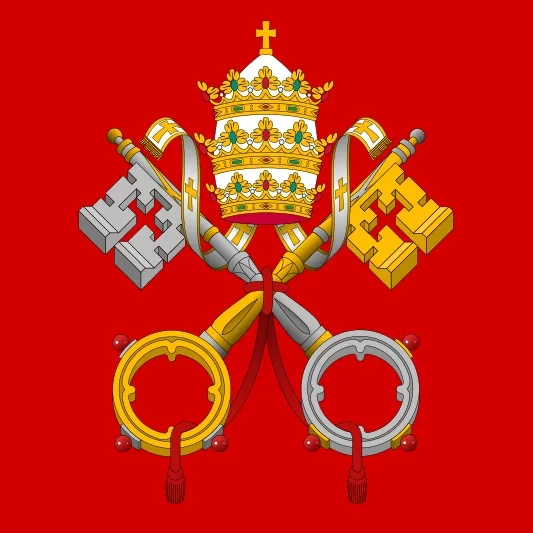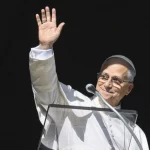
The Vatican and Microsoft have created a 3D digital model of St. Peter’s Basilica using the latest in artificial intelligence to offer a new way to experience the nearly 2,000-year history of the tomb of St. Peter. / Credit: Microsoft La Basilica Di San Pietro: AI-Enhanced Experience
Vatican City, Nov 13, 2024 / 12:35 pm (CNA).
The Vatican and Microsoft have created a 3D digital model of St. Peter’s Basilica using the latest in artificial intelligence to offer a new way to experience the nearly 2,000-year history of the tomb of St. Peter.
Accessible worldwide at virtual.basilicasanpietro.va, the free interactive platform allows anyone in the world to “visit” the virtual 3D model of St. Peter’s Basilica, generated using AI from more than 400,000 high-resolution images of the basilica taken by drones using advanced photogrammetry techniques.
Microsoft’s Vice Chair and President Brad Smith launched the 3D “digital twin” of the basilica at a press conference this week at the Vatican.
“It is literally one of the most technologically advanced and sophisticated projects of its kind that has ever been pursued,” Smith said.
The digital platform expands access to people who may never have the opportunity to visit the Vatican but can now experience the beauty, history, and spiritual significance of one of the most important churches in the world.

The model makes it possible to “see this basilica as I think no generation has ever seen it before,” Smith said.
The Microsoft president also announced the launch of an educational Minecraft game exploring St. Peter’s Basilica expected in January 2025 and a new immersive in-person exhibition on the terrace of St. Peter’s Basilica for the Catholic Church’s jubilee year.
A look back at the ‘old St. Peter’s Basilica’
The virtual experience goes beyond just showcasing the baroque splendor of today’s St. Peter’s Basilica, harnessing technology to take viewers back in time to its ancient origins from Nero’s Circus to the ancient St. Peter’s Basilica built by Constantine.
Artificial Intelligence gives us a glimpse inside of the old St. Peter’s Basilica as it looked in the 4th century and for the many medieval pilgrims centuries later in the new Vatican exhibit by Microsoft that will open for the Catholic Church’s Jubilee Year. pic.twitter.com/ods03Ol8GE
— Courtney Mares (@catholicourtney) November 11, 2024
It begins with Caligula’s first-century construction of a circus on Vatican Hill and the placement of an Egyptian obelisk at its center. That obelisk, now in St. Peter’s Square, witnessed centuries of history — from Rome’s bloody persecutions of Christians and the crucifixion of Peter to massive papal Masses with tens of thousands of pilgrims today.
“As you will see when you go through the exhibit or if you look at the webpage, it’s fundamentally a story in three chapters,” Smith explained. “The first chapter, in my view, begins exactly where it should — we are here today because St. Peter was here 2,000 years ago.”

“So the first chapter of the story brings to life in new ways … the story of his life, the story that is told in the Gospels.”
The second chapter covers the transformations of the site of St. Peter’s tomb over the course of nearly 2,000 years from Peter’s burial and the construction of a church to its place as a center of Christian pilgrimage.

Around A.D. 160, a small funerary monument known as the “Trophy of Gaius” was built over Peter’s grave, becoming a pilgrimage site. When Constantine legalized Christianity in the fourth century, he ordered a massive basilica to be built over this tomb, leveling the necropolis beneath.

The virtual tour allows one to imagine what it would have been like to visit the old St. Peter’s Basilica built by Constantine, one of the ancient world’s most important sanctuaries, “a magnificent sepulcher … to which countless people from every part of the Roman Empire come,” Eusebius of Caesarea described in the fourth century.

More than 1,175 years after the completion of the original St. Peter’s Basilica, Pope Julius II laid the first stone of the new Vatican basilica in 1506. Construction of the present St. Peter’s Basilica took more than a century, inspiring works by artists like Bramante, Michelangelo, and Bernini. The basilica will celebrate the 400th anniversary of its consecration in 2026.
Online educational resource
One of the most exciting aspects of the 3D digital model is that it provides the opportunity for people who might never have the opportunity to visit the Vatican to see and experience St. Peter’s Basilica, Smith explained.
“We’re taking this story to the world,” he said.

The new virtual platform serves as an educational resource that brings St. Peter’s Basilica to students, teachers, and historians worldwide, providing interactive tools and audio guides in multiple languages.

Through immersive 3D tours, online visitors can navigate the basilica’s mosaics, the cupola, the underground necropolis, and Peter’s tomb. The digital model, or “digital twin,” captures areas typically off-limits to visitors, providing a detailed look at the basilica’s art, architecture, and history.
The concept of a “digital twin” — a digital counterpart of a physical object — is commonly used in the manufacturing industry. For the basilica, however, it’s a way to expand human understanding by capturing and sharing cultural heritage.

“When you think about this partnership, I think it’s as extraordinary as the project itself, because it brings together one of the oldest and most important institutions in the world with the newest technology that humanity has created,” Smith said.
‘Pétros ení’: An immersive exhibition for jubilee pilgrims
For those planning a jubilee pilgrimage to Rome, the Vatican will soon open a new exhibition titled “Pétros ení” (“Peter is here”) using the 3D digital model developed by Microsoft and the digital preservation company Iconem. This ticketed, immersive experience, designed for the jubilee year, takes visitors on a journey through the basilica’s history.

The exhibit starts up on the terrace of St. Peter’s Basilica behind its massive dome designed by Michelangelo and continues inside some of the basilica’s previously unvisited upper passageways, allowing visitors to look down at the basilica’s Altar of St. Michael below.

The exhibit’s interactive digital displays showcase the intricate details of the interior of St. Peter’s dome up close and two round theaters immerse visitors in what it would have been like to visit the basilica in different moments throughout the centuries.

St. Peter’s Basilica Minecraft
In January 2025, Microsoft will release a Minecraft Education version of St. Peter’s Basilica to reach younger audiences. In this digital replica, students will be able to navigate the basilica, explore its architecture, and learn its history through Minecraft’s interactive environment. This version will allow students to “walk” through the basilica with their character and explore its features as part of their gameplay.
“Many schools now use Minecraft to teach a wide variety of skills or capabilities,” Smith said, expressing hope that the Minecraft edition of St. Peter’s Basilica will become a unique resource for Catholic and secular schools alike, offering new ways to engage with history and art.
AI-enhanced conservation efforts
The digital twin also provides the Vatican with new tools for conservation. Using advanced algorithms from Microsoft’s AI for Good Lab, the virtual model has revealed previously undetected cracks, missing tiles in mosaics, and other signs of wear that will help caretakers preserve the basilica.
“Our AI for Good Lab developed a special AI algorithm so it could scan these images and identify where there is, say, a crack in the wall,” Smith explained.

The conservators “who are responsible for the preservation of this extraordinary building, who work on its restoration, now have all of this data and the power of AI to enable them to work even better,” he added.
Pope Francis got a preview of the new digital model of St. Peter’s Basilica during a meeting with the Microsoft team and the Fabric of St. Peter, the organization responsible for the conservation and maintenance of St. Peter’s Basilica.

The pope encouraged the basilica’s caretakers to adopt technologies “that encourage not only people’s interactive participation but especially their awareness of the sacred place, which is a space for meditation.”
He said technological tools demand creativity and responsibility to be governed and used constructively.
“This house of prayer for all peoples has been entrusted to us by those who have preceded us in faith and apostolic ministry,” Francis said in reference to St. Peter’s Basilica. “Therefore, it is a gift and a task to care for it, in both a spiritual and material sense, even through the latest technologies.”











